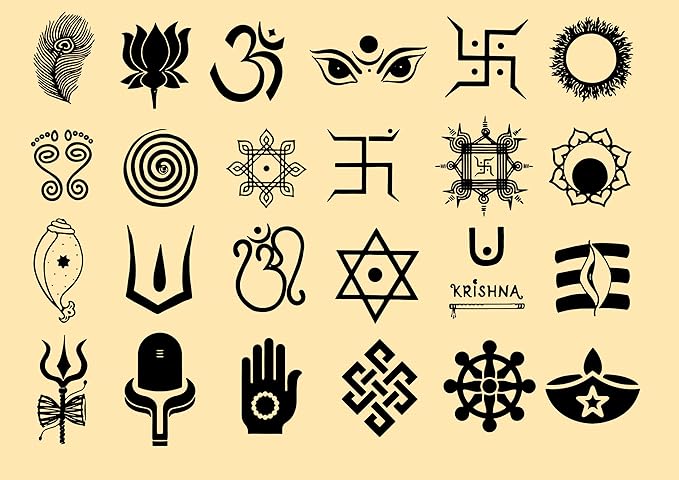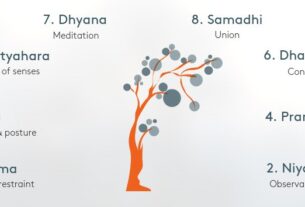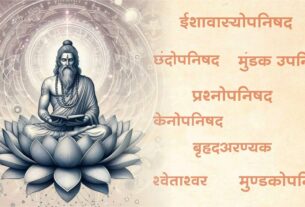The Mystical Depths of Hinduism: Unveiling Its Profound Secrets
Introduction
Hinduism, one of the most ancient and complex religions in the world, is rich with profound teachings and mystical insights. Unlike some religions that have a single founder or a unified doctrine, Hinduism is a vast and diverse tradition with multiple layers of beliefs, practices, and philosophies. This blog delves into some of the deeper and more esoteric aspects of Hinduism, exploring its sacred texts, spiritual practices, and philosophical concepts.
The Sacred Texts: Vedas and Upanishads
The foundation of Hinduism lies in its ancient scriptures, primarily the Vedas and the Upanishads.
1. The Vedas:
- The Vedas are the oldest and most authoritative scriptures of Hinduism, consisting of four main texts: Rigveda, Samaveda, Yajurveda, and Atharvaveda. These texts contain hymns, rituals, and prayers dedicated to various deities.
- The Vedas are divided into four parts: Samhitas (hymns), Brahmanas (rituals), Aranyakas (theological discussions), and Upanishads (philosophical teachings).
2. The Upanishads:
- The Upanishads are a collection of philosophical texts that explore the nature of reality, the self, and the universe. They are considered the culmination of Vedic thought.
- Key concepts in the Upanishads include Brahman (the ultimate reality), Atman (the individual soul), and the relationship between the two. The famous Mahavakya, or “great sayings,” like “Tat Tvam Asi” (That Thou Art) encapsulate the essence of these teachings.
Yoga and Meditation: The Path to Self-Realization
Yoga, originating from ancient Hindu practices, is a comprehensive spiritual discipline that encompasses various paths to self-realization.
1. The Eight Limbs of Yoga:
- Patanjali’s Yoga Sutras outline the Ashtanga (eight-limbed) Yoga, which includes Yama (ethical guidelines), Niyama (personal disciplines), Asana (postures), Pranayama (breath control), Pratyahara (withdrawal of senses), Dharana (concentration), Dhyana (meditation), and Samadhi (union with the divine).
2. Types of Yoga:
- Hatha Yoga: Focuses on physical postures and breath control to prepare the body for meditation.
- Raja Yoga: Emphasizes meditation and mental discipline to achieve self-mastery.
- Bhakti Yoga: The path of devotion and love towards a personal deity.
- Karma Yoga: The path of selfless action and service.
- Jnana Yoga: The path of knowledge and wisdom, focusing on the study of scriptures and self-inquiry.
Chakras and Kundalini: The Subtle Energy System
Hinduism teaches that the human body is a microcosm of the universe, with a complex system of energy centers called chakras.
1. Chakras:
- There are seven main chakras, each associated with specific physical, emotional, and spiritual aspects: Muladhara (root), Svadhisthana (sacral), Manipura (solar plexus), Anahata (heart), Vishuddha (throat), Ajna (third eye), and Sahasrara (crown).
- Balancing these chakras is essential for overall well-being and spiritual growth.
2. Kundalini:
- Kundalini is a dormant spiritual energy coiled at the base of the spine. Through practices like Kundalini Yoga and meditation, this energy can be awakened and rise through the chakras, leading to spiritual enlightenment and transformation.
Mantras and Sacred Sounds
Mantras are powerful sacred sounds or phrases used in meditation and rituals to connect with the divine and harness spiritual energy.
1. The Power of Om:
- “Om” is considered the primordial sound of the universe, representing the essence of Brahman. Chanting Om during meditation helps in attuning to the cosmic vibrations and achieving inner peace.
2. Other Mantras:
- Different mantras are dedicated to various deities and purposes, such as the Gayatri Mantra for spiritual enlightenment and the Maha Mrityunjaya Mantra for healing and protection.
Dharma and Karma: The Moral and Ethical Framework
Hinduism places a strong emphasis on living a righteous life according to one’s Dharma and understanding the law of Karma.
1. Dharma:
- Dharma refers to the moral and ethical duties and responsibilities specific to an individual based on their age, caste, gender, and occupation. It is the guiding principle for living a balanced and harmonious life.
2. Karma:
- Karma is the law of cause and effect, where every action has consequences. Good deeds (Punya) lead to positive outcomes, while bad deeds (Papa) lead to negative repercussions. Understanding Karma encourages ethical living and spiritual growth.
Reincarnation and Moksha: The Cycle of Birth and Liberation
The concepts of reincarnation and Moksha are central to Hindu beliefs about the cycle of life and the ultimate goal of spiritual liberation.
1. Reincarnation:
- Hindus believe in the transmigration of the soul (Samsara), where the Atman (soul) is reborn in different bodies across lifetimes based on past Karma.
2. Moksha:
- Moksha is the ultimate goal, representing liberation from the cycle of birth and death. It is achieved through self-realization, understanding the true nature of the Atman and its unity with Brahman.
Deities and Their Symbolism
Hinduism has a rich pantheon of gods and goddesses, each symbolizing different aspects of life and the universe.
1. Trimurti:
- The Trimurti consists of three major deities: Brahma (the creator), Vishnu (the preserver), and Shiva (the destroyer). They represent the cyclical nature of the universe.
2. Goddesses:
- Goddesses like Lakshmi (wealth and prosperity), Saraswati (knowledge and arts), and Durga (strength and protection) play significant roles in Hindu worship and represent various feminine aspects of the divine.
Sacred Geometry and Yantras
Yantras are geometric diagrams used in meditation and worship to focus spiritual energy and connect with the divine.
1. Sri Yantra:
- The Sri Yantra is one of the most powerful and complex yantras, representing the cosmos and the human body. It is used to invoke the goddess Tripura Sundari and achieve spiritual harmony.
Siddhis and Spiritual Powers
Hindu teachings include the concept of Siddhis, or spiritual powers, attained through intense meditation and spiritual practice.
1. Types of Siddhis:
- Siddhis range from mundane abilities like increased strength and agility to higher spiritual powers like telepathy, levitation, and healing.
2. Purpose of Siddhis:
- While Siddhis can be intriguing, Hinduism teaches that they are secondary to the ultimate goal of self-realization and should not distract from the path of spiritual growth.
Conclusion
Hinduism is a profound and intricate tradition with many layers of meaning and practice. Its teachings offer insights into the nature of existence, the universe, and the path to spiritual liberation. By exploring these deep and mystical aspects, one can gain a greater understanding of this ancient tradition and its enduring wisdom.



